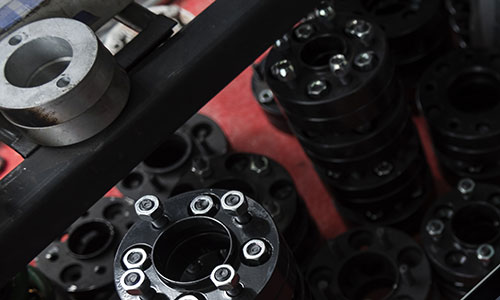The purchase and resale of auto parts represent approximately 50% of a body shop’s revenues. Furthermore, a weak parts procurement process can be the source of many headaches when it comes to business and productivity. It is important for shop managers to take a good look into this.
“That’s How It Was Done in the Good Old Days.”
Not so long ago, parts were mainly purchased over the phone or via catalogue. Although it made the job more social, it was quite time consuming for the buyer, not to mention the risk of errors. Above all, you could miss a chance to grab the best parts at the best price or discount, with the right certification and a suitable delivery time.
At the time of writing, in 2020, we are in the era of artificial intelligence and big data. It is nonetheless surprising to find out how many body shops still use the order by phone method. However, most shops use estimate software to guide their purchases.
Ordering Correctly: The Accuracy of Information.
It is interesting to pay attention to numbers when using this type of software, as it is not 100% reliable. As a matter of fact, statistical analyses show that 21% of the time, and this includes the new parts market, there is a difference between the price from the estimate software and the one actually charged by the supplier. This can create real headaches for the buyer and his team. This percentage can even reach 90% for some major automobile brands. Half the time, a collision shop with no efficient parts procurement system will need supplements*, for all part types.
The most important aspect of the parts procurement process for a collision shop manager remains the accuracy of the information on the availability, quality/certification and price of parts. To save time and optimize efficiency, the buyer should include a purchasing platform in his process, which would give him access to all part types (new, aftermarket, recycled, refurbished) in addition to accurate information and reliable KPIs. Communication and positive relationships with suppliers are also good success factors for a shop. Powerful parts procurement programs, such as ProgiParts, are a strong contact point to grow business relationships.
 Ordering Incorrectly: Serious Consequences for the Workshop.
Ordering Incorrectly: Serious Consequences for the Workshop.
The negative impacts for a collision shop that does not consider the best practices for parts procurement are first operational, but quickly become financial. This can affect the shops’ performance regarding cycle time, space management, team’s effectiveness, cash-flow, production capacity and profitability. Let’s not forget an issue that is often overlooked in business management: customer satisfaction. To what extent is it impacted by the cycle time or relationships with customers, for instance when a client realizes that the whole repair appointment booking system seems pretty much improvised?
Better Ordering: But When?
The shop must focus on using a powerful digital parts procurement platform. It must also determine when to order parts; before the repair and according to the buyer’s schedule.
With a digital parts procurement platform such as ProgiParts, the buyer is literally a finger’s length away from all his suppliers who can quickly and accurately confirm the price, availability and quality of parts. With such an efficient platform, the when-to-order becomes simple. Parts can be ordered a week (working days) prior to the repair to avoid any unplanned events that may cause delays. The buyer can send part confirmation requests in the morning rather than at the end of the day. This helps get parts confirmations and order them without wasting time due to suppliers’ closing times. A good parts procurement system must also be able to support deferred orders.
The rule of thumb is to avoid bringing clients in before receiving all the parts needed to repair their vehicle. You must work as a team to have the client come in at the right moment. Doing this can help organize the shop and its yard space in no time.
A Little Trick
Receiving and delivering vehicles every day is a good way to avoid drowning your shop in auto parts. This makes for better space management, cash-flow and it optimizes the shop’s capacity.
In Conclusion
As a shop manager, it is important to consider the options and features which a parts procurement system can provide. You might be surprised at all the little tools you could find to improve not only your efficiency but also your ability to better control your logistics flow.
* Note to the reader: Keep in mind that a good appraisal method can also be key when dealing with supplement requests.
Author: Alexandre Rocheleau
Collaboration: Patrick Turcotte, Jean-François Potvin and Laurent Tri
Revision and translation: Sophie Larocque





